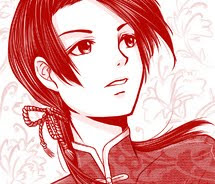Now, I tried to make a small dictionary from English to Japanese. I'm so sorry about the mistakes. I hope it could help you.
I : Watashi
I am Allen : Watashi wa Allen/Aren desu(Aren: Allen, it's changing because of the
Japanese speech)
Japanese speech)
Happy Birthday : O-tanjoubi omedetou gozaimasu
Merry Christmas : Kurisumasu wa Omedeto gozaimasu
Happy New Year : Akimashite Omedetto Gozaimasu
You(singular) : Anata
 He : Kare
He : KareShe : Kanojo
They : Karera wa
You(plural) : Anata wa
God : Kami-sama
Greetings : Aisatsu
Good morning : Ohayou gozaimasu
Good afternoon : Konnichiwa
Good evening : Konbanwa
Good night : Oyasumi nasai
How are you? : Ogenki desu ka?
I'm fine. And you? : Genki desu. Anata wa?
I'm fine too : Watashi mo genki desu
Goodbye : Sayoonara
See you tomorrow : Mata ashita
I love you(informal) : Aishiteru
I love you (formal) : Watashi wa anata ni aishite imasu
Thanks (informal) : Arigatoo
Thanks (formal) : Arigatoo gozaimasu
You're welcome : Doo itashimashite
Sorry : Gomenasai
Excuse me, pardon : Sumimasen
But : Soredemo
Yes : Hai
No : Iie
How do you do? : Hajimemashite
 Hello : Moshi-moshi
Hello : Moshi-moshiI understand : Wakarimashita
I don't understand : Wakarimasen
I don't know : Shirimasen
Family : Kazoku
Grandpa : Sofu
Grandma : Sobo
Father : Otousan
Mother : Okaasan
Uncle : Oji
Aunt : Obasan
Elder brother : Niisan
Elder sister : Neesan
younger brother : Ototousan
Younger sister : Imotousan
School : Gakko
 Senior : Senpai
Senior : SenpaiJunior : KÔhai
Teacher : Sensei
Student : Seito
Principal : KÔhcÔ
Mark : Kachi
Animal : Hoshi
Insect : Mushi
Dog : Inu
Cat : Neko
Scorpion : Sasori
Fish : Mizu
Bird : Kaaru
Crab : Kani
Monkey : Saru
Horse : Uma
Sheep : Ushi
Color : Iro
Red : Akai
Yellow : Kiiroi
Green : Midori
Blue : Aoi
Pink : Ai
Purple : Murasaki
Grey : Kurai
Black : Kuroi
White : Shiroi
Country : Kuni
Japan : Nihon
Netherland : Oranda
 France : Furansu
France : FuransuEngland : Igirisu
Germany : Doitsu
Italy : Itaria
China : Chuugoku
Indonesia : Indoneshia
Australia : Ôsutoraria
| |



